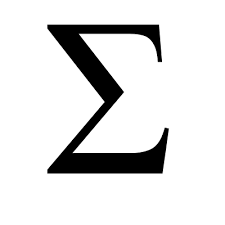Calculus
Cards (18)
- How does the gradient of the curve change?
- What does the gradient of the tangent at a point on the curve represent?
- How can you approximate the gradient at a point on the curve?
- What happens to the gradient of the chord as the points get closer together?
- What is the gradient of the chord between the points (2, 4) and (3, 9)?
- What is the gradient of the chord between the points (2, 4) and (2.5, 6.25)?
- What is the gradient of the chord between the points (2, 4) and (2.01, 4.41)?
- What is the formula for the gradient of a chord?
- What does the limit of the gradient approach as the distance \(H\) approaches zero?
- What is the result of differentiating \(y = x^2\)?
- What is the result of differentiating \(y = x^3\)?
- What is the general rule for differentiating \(y = x^n\)?
- What is the process of going from the curve to its gradient called?
- What notation is commonly used for differentiation?
- What are the steps to differentiate \(y = x^2\)?
- What are the steps to differentiate \(y = x^3\)?
- What is the process of differentiation for polynomial functions?
- What is the significance of the limit as \(H\) approaches zero in differentiation?
See similar decks
calculus
further maths16 cardsCalculus
Further Maths1 cardAQA A-Level Further Mathematics
2594 cards2.4 Further Calculus
AQA A-Level Further Mathematics > 2. Compulsory Content70 cards4. Calculus
OCR A-Level Further Mathematics > Pure Core195 cards5. Further Mechanics
Edexcel A-Level Physics140 cards4.2 Integration
OCR A-Level Further Mathematics > Pure Core > 4. Calculus94 cardsAP Calculus AB
3363 cards4.1 Differentiation
OCR A-Level Further Mathematics > Pure Core > 4. Calculus101 cards2.3 Further Algebra and Functions
AQA A-Level Further Mathematics > 2. Compulsory Content93 cards2.5 Further Vectors
AQA A-Level Further Mathematics > 2. Compulsory Content87 cardsAP Calculus BC
6237 cardsUnderstanding the Fundamental Theorem of Calculus:
AP Calculus AB > Unit 6: Integration and Accumulation of Change > 6.4 The Fundamental Theorem of Calculus and Definite Integrals39 cards14.2.2 Understanding calculus applications
AQA A-Level Physics > 14. Practical skills and data analysis > 14.2 Mathematical skills79 cardsMathematics A
OCR A-Level Further Mathematics1987 cardsStatistics
OCR A-Level Further Mathematics > Optional Papers262 cardsOCR A-Level Further Mathematics
4427 cards2.1.3 Debates on further reform
OCR A-Level Politics > 2. UK Government > 2.1 The Constitution32 cards6. Further mechanics and thermal physics
AQA A-Level Physics174 cards2. Matrices
OCR A-Level Further Mathematics > Pure Core531 cards5.1. Momentum
Edexcel A-Level Physics > 5. Further Mechanics53 cards
